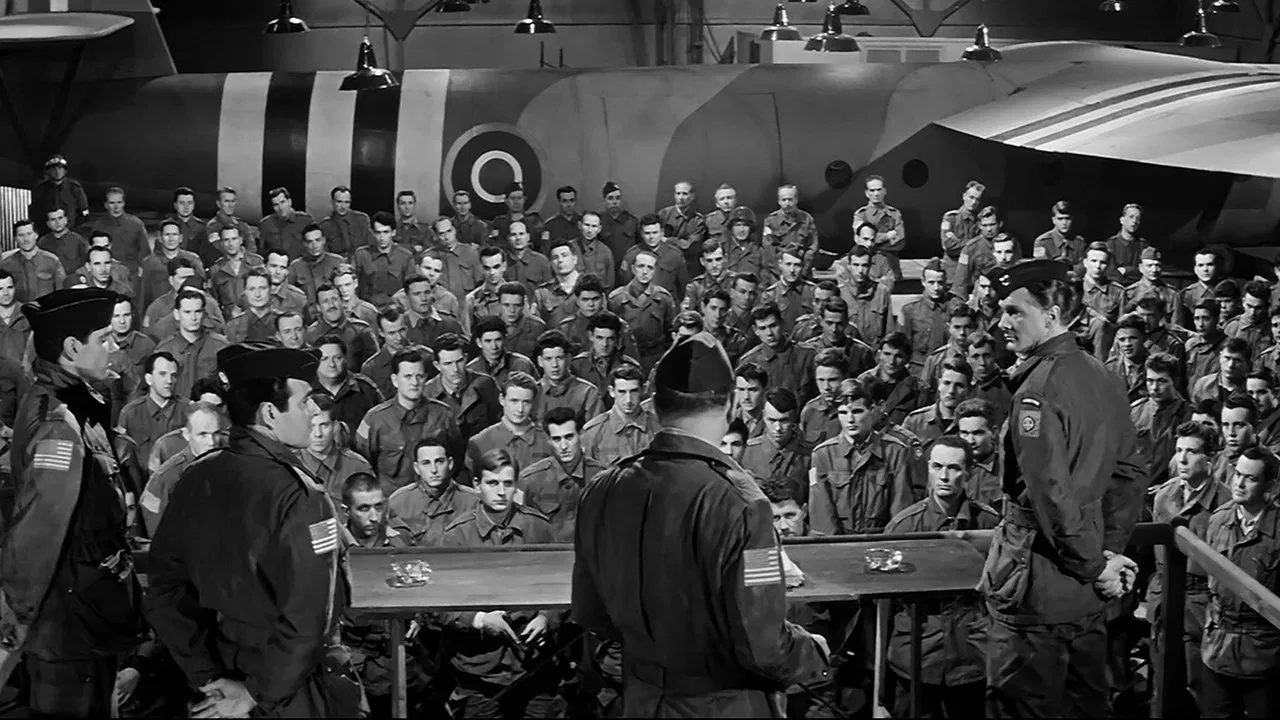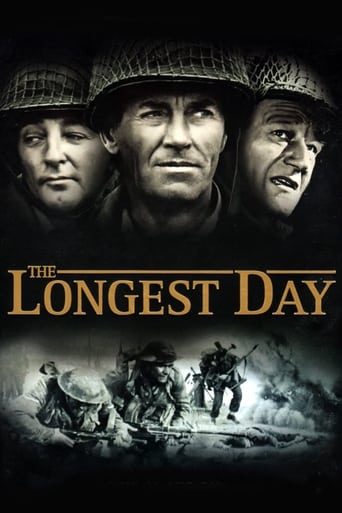

everything you have heard about this movie is true.
... View MoreGood films always raise compelling questions, whether the format is fiction or documentary fact.
... View MoreI think this is a new genre that they're all sort of working their way through it and haven't got all the kinks worked out yet but it's a genre that works for me.
... View MoreIt’s fine. It's literally the definition of a fine movie. You’ve seen it before, you know every beat and outcome before the characters even do. Only question is how much escapism you’re looking for.
... View MoreThis movie does a great job of bringing such a massive logistical operation down to the individual level in several of the major components - paratroopers, infantry storming ashore, naval personnel on the ships, the generals trying to plan it all, etc etc.Some have criticized it for not being explicit enough in the violence and others who say that it tried to do too much at once. I'd like to point out that this movie was released in 1962. That was only 18 years after the actual invasion. Hence, the audience knew the horrors of war - they'd lived thru it. If they didn't actually serve in combat, they sure knew men who did, maybe even knew one or two who died in combat. Hence, they didn't need to be shown all the gore that was shown in "Saving Private Ryan" cause they knew it far too well.As far as the scope of the movie, one must realize the depth of the operation the movie tried to overview. To do that, the movie had to be long. To give each component of that massive scope a human element, yet provide insight into what it was like for the individuals involved, the movie had to be long and it had to involve numerous subplots to even come close to being representative.And, here we are 73 years on from the actual event the movie portrays and this great flick STILL draws a great following. I'd say all of that makes it a 10/10.
... View More" . . . because our glorious Fuehrer has taken a sleeping pill and is not to be awakened," laments a German field marshal around dawn on THE LONGEST DAY. With its peppy theme song desecrated by sappy, upbeat lyrics, this farce is no BRIDGE ON THE RIVER KWAI. The soldiers there had the sense to merely whistle "Colonel Bogie's March," NOT prattle insipid lyrics glossing over unspeakable war-time agonies. Most of the spoken dialogue in THE LONGEST DAY sounds so contrived, pompous, and written 15 years after-the-fact that it seems probable that some of the dimmer bulbs in the cast--such as self-admitted potheads John Wayne and Robert Mitchum--were allowed to ad lib their own lines. With at least 60 speaking parts, most characters (including Henry Fonda's doomed American President's son) get lost in the shuffle, and virtually none merit a movie watcher's attention (no matter how Heroic their Real Life counterparts). If Hitler had had an opportunity to watch this three-hour snooze-fest, he would not have needed to take a sleeping pill in order to nod off! Producer Darryl F. Zanuck apparently was too dense to realize that having FIVE directors on your flick is nothing to crow about. If he wanted to be honest about something, he might have advertised that THE LONGEST DAY was mostly his effort to make his latest mistress--Irina Demich--a movie star, so that he could reap the perks that might come with her gratitude. THE LONGEST DAY is like giving SAVING PRIVATE RYAN a HOGAN'S HEROES makeover. This could well be one of the WORST World War Two pictures of all time!
... View MoreAs my great grandfather was one of the many men who participated to this historic and epic event, this movie has always been very special to me and my family.Each time my great grandfather was watching or even discussing this movie, all his memories of that day as well as all the relationship he had with great friends he lost on that dirty beach came through. The moments of happiness, the tension becoming stronger each day waiting for big battle, the fear of dying or losing the strangers you learned to know and respect throughout the intense training. This movie had a very special resonance to him and he was very thankful that such a movie was released and even more he was proud that the director didn't take on any side because the Germans were as afraid and respectful towards the men they faced.Now when I watched this movie, it makes me remember of my great grandfather who was one of those heroes, one of what we called the greatest generation. He had the chance to survive this day and the battle which followed and claimed even more lives. So it has also a very special place to my heart. We should never forget their sacrifice and be careful to not repeat the same mistake which led to WW2.
... View MoreThe epic war movie to end all epic war movies, The Longest Day is producer Darryl F. Zanuck's salute to those involved in the Invasion of Normandy. It's a riveting film that recreates the events leading up to D-Day for the Americans, the British, the French, and the Germans. It's told in great detail with more historical accuracy than is usual for a movie based on real people and events (then or now). It helps that it was filmed on location in many of the real places and used military consultants, both Allied and Axis, who had actually been involved in D-Day. The cast features many big names such as John Wayne, Henry Fonda, Robert Mitchum, Richard Burton, and so many others it'd take the whole review just to list them. I can honestly say that, despite the huge cast, every actor involved does solid work. No one was phoning it in or hamming it up in this one. The special effects and beautiful black & white cinematography both deservedly won Oscars. It's a remarkable film that holds up very well after all these years and stands as the premier war movie of its kind. One of the last great WWII movies made by people who lived through it, the greatest generation.
... View More